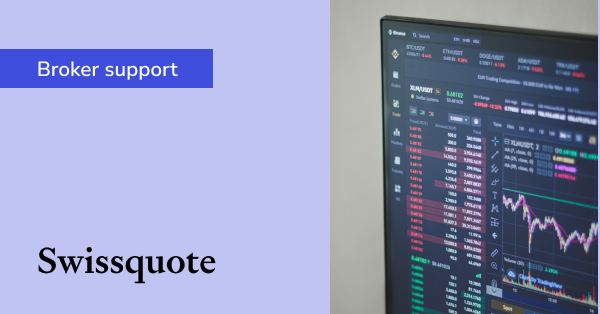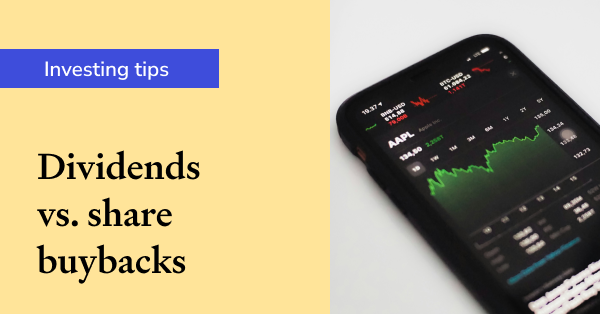Track stocks on the Tel Aviv Stock Exchange with Sharesight
With Sharesight, investors can easily track over 1,000 stocks and ETFs on the Tel Aviv Stock Exchange (TASE). This is in addition to Sharesight’s support for over 40 global markets including leading US markets such as the Nasdaq and New York Stock Exchange (NYSE). Sharesight’s extensive market support allows investors from around the world to track all of their investments in one place, while providing them with powerful performance reports, dividend tracking and tax reporting features.

What is the Tel Aviv Stock Exchange?
Established in 1953, the Tel Aviv Stock Exchange (TASE) is the only securities exchange in Israel. Known colloquially as the 'Bursa’, it hosts a wide range of securities including shares, bonds and ETFs, and provides services such as trading and clearing securities, remote trading and global clearing. As of August 1, 2019, the Tel Aviv Stock Exchange is a publicly traded company.
Why investors should track their investments on the TASE with Sharesight
With Sharesight, investors can easily track the price and performance of stocks, ETFs and funds listed on the TASE alongside investments across multiple global markets, brokers and asset classes. By consolidating all of their investments in Sharesight, investors gain a portfolio-wide view of their investment performance, benefitting from daily price updates for the TASE, plus advanced reporting designed for the needs of self-directed investors. In addition, Sharesight’s annualised performance calculation methodology gives investors the complete picture of their portfolio returns by calculating the impact of capital gains, brokerage fees, dividends and foreign exchange rates on performance.
Track dividend income from TASE stocks
Unlike other portfolio trackers, Sharesight automatically tracks dividend and distribution income and includes this information when calculating your investment return. In the screenshot below for example, dividends make an important contribution to this stock’s returns, highlighting the importance of a portfolio tracking solution that includes more than just capital gains in its performance calculations.

An example of a TASE stock holding with dividends contributing to 19.44% of returns.
Run powerful performance reports built for investors
For investors who want a more detailed breakdown of their portfolio’s performance, Sharesight offers a range of powerful reports including:
-
Performance: Calculate your total portfolio returns over any selected period.
-
Diversity: Discover how the assets in your portfolio are diversified across different investment sectors, investment types, countries and markets.
-
Contribution Analysis: Measure the impact of your holdings and asset allocations on your overall portfolio performance.
-
Multi-Period: Compare your portfolio returns over different time periods.
-
Multi-Currency Valuation: See the value of your holdings denominated in the currency of your choice.
Calculate the impact of TASE investments on your portfolio’s returns
In the screenshot below, you can see the Contribution Analysis Report (sorted by market) being used to assess the ‘weight’ of various markets in an Israeli investor’s portfolio. This would be particularly useful for an investor looking to compare the relative contribution of their TASE investments to the total return on their portfolio, for instance.
In this example, the TASE (TLV) is the most significant contributor to the portfolio’s value, constituting 51.17% and ILS77,244.67, followed by the Nasdaq, constituting 46.51% and ILS70,211.65. The report also includes a detailed breakdown of each individual holding’s returns, classified by market.
 Sharesight’s Contribution Analysis Report being used on an Israeli portfolio with a mixture of Israeli and US stocks.
Sharesight’s Contribution Analysis Report being used on an Israeli portfolio with a mixture of Israeli and US stocks.
How to track stocks on the TASE with Sharesight
-
If you’re not using Sharesight yet, sign up for a FREE account to get started.
-
Add your holdings to your portfolio by searching for the relevant stock code under the market code TLS. Alternatively, you can add holdings through Sharesight’s File Importer feature. Note: While TASE is commonly used as the market code for the Oslo Stock Exchange, it is listed under TLS in Sharesight.
-
Sharesight will automatically fill in the price history and performance valuation for your holdings. It will also backfill past dividends (and continue to add new ones as they are announced) – plus factor in the impact of any currency fluctuations on your performance for international investors.
Already tracking this market in Sharesight?
If you are currently tracking a Tel Aviv Stock Exchange holding using Sharesight’s Custom Investment feature, you can merge it with its appropriate instrument, without losing any data.
Track your investment portfolio with Sharesight
Investing in stocks on the TASE and other global markets? You need to track your investment portfolio with Sharesight so you can:
-
Track all your investments in one place, including stocks in over 40 major global markets, mutual/managed funds, property, and even cryptocurrency
-
Automatically track your dividend and distribution income from stocks, ETFs and mutual/managed funds
-
Run powerful reports built for investors, including Performance, Portfolio Diversity, Contribution Analysis and Future Income (upcoming dividends)
-
Get the true picture of your investment performance, including the impact of brokerage fees, dividends, and capital gains with Sharesight’s annualised performance calculation methodology
Sign up for a FREE Sharesight account and get started tracking your investment performance (and tax) today.
![]()
FURTHER READING

How Sharesight helps advisors track net worth and simplify compliance
We talk to Ryan Jones, Partner, Accountant and Financial Advisor at Jones Louros, about how he uses Sharesight to manage his clients’ investment trusts.

Automatically track Swissquote trades with Sharesight
If you trade using Swiss broker Swissquote, you can automatically import your trading data to your Sharesight portfolio.

Dividends vs. share buybacks: Which is better for investors?
We take a look at dividends and share buybacks, discussing the pros and cons of each, the tax implications and which one is more beneficial for investors.